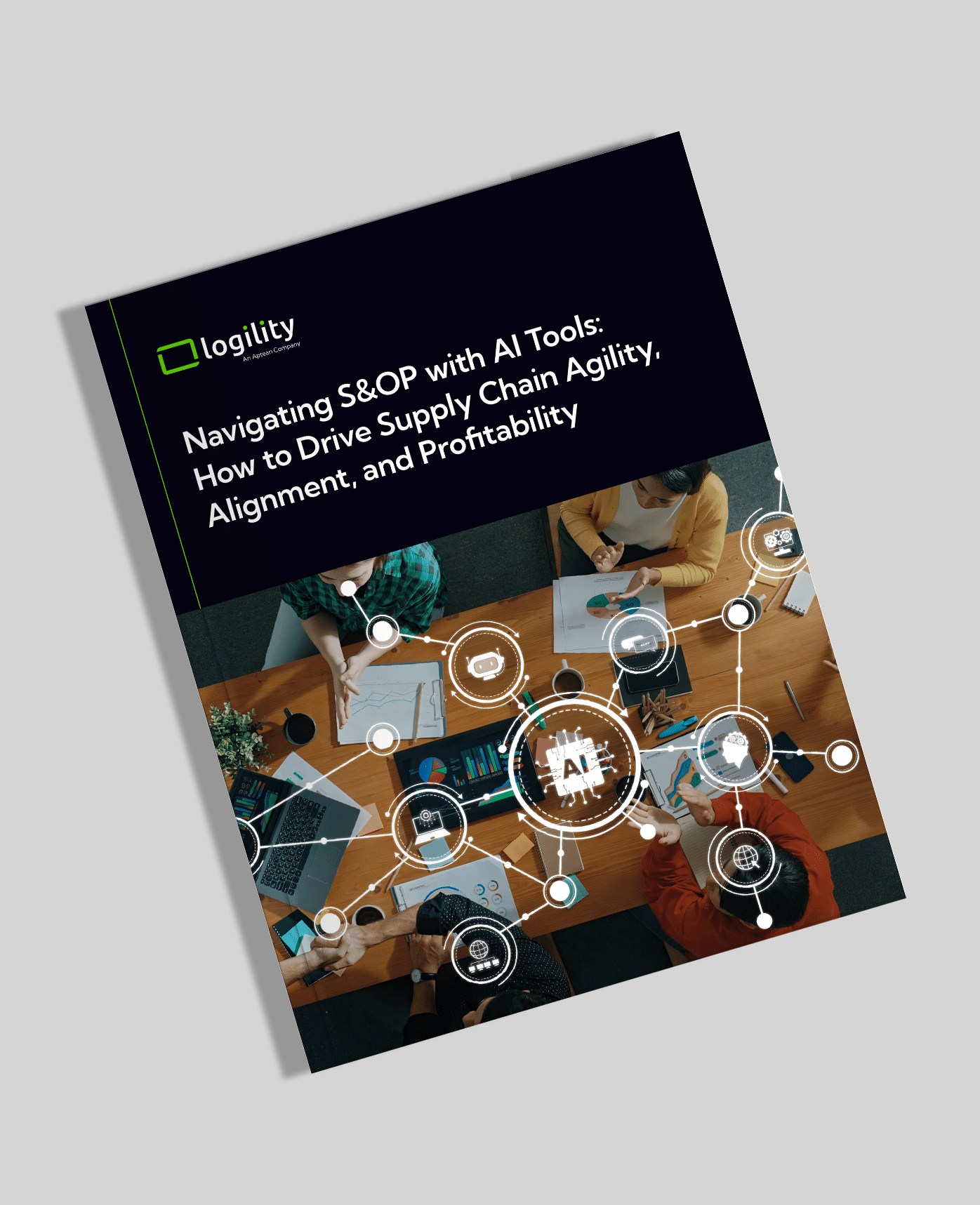WhitePaper
Navigating S&OP with AI Tools
How to Drive Supply Chain Agility, Alignment, and Profitability
Download this guide to navigating S&OP with AI tools.
Traditional Sales & Operations Planning (S&OP) is buckling under the weight of complexity, volatility, and outdated processes. This whitepaper explores how AI is reshaping the S&OP landscape, transforming it from a reactive, manual exercise into a proactive, data-driven strategy. Learn how leading organizations are leveraging AI to streamline planning, improve forecast accuracy, and make faster, smarter decisions.
Discover the five core steps of modern S&OP and how AI tools are accelerating each one. From real-time data integration to predictive planning and scenario modeling, this guide offers a practical roadmap to future-proof your supply chain strategy. Featuring a case study from Great Lakes Cheese, you’ll see how AI-enabled S&OP delivers measurable impact in the real world.
Key takeaways from this whitepaper include:
- Understand the limitations of traditional S&OP and why legacy methods are no longer sustainable.
- Explore the five essential steps of modern S&OP and how AI enhances each phase.
- See AI in action through a real-world case study featuring Great Lakes Cheese.
- Learn why one forecast isn’t enough—and how AI enables dynamic, multi-scenario planning.

Frequently Asked Questions
- Why is traditional S&OP no longer sufficient in today’s supply chain environment?
Traditional S&OP relies heavily on manual processes, spreadsheets, and static reports. These methods are slow, fragmented, and often outdated by the time decisions are made. In a world of constant disruption—supply shortages, labor gaps, and shifting demand. This lag leads to missed opportunities, excess costs, and misaligned strategies.
- How does AI improve forecast accuracy and planning speed?
AI accelerates data gathering and processing, enabling real-time insights and predictive modeling. Machine learning adapts to changing conditions, while generative AI allows non-technical users to query data in natural language. These capabilities reduce forecast errors by up to 30% and shorten planning cycles by 70%.
- What are the five core steps of modern S&OP?
Modern S&OP includes:
- Innovation and Strategy Review
- Demand Review
- Supply Review
- Financial Integration
- Executive Business Review
Each step is designed to foster cross-functional alignment and ensure operational, strategic, and financial goals are connected.
- Why is one forecast not enough?
Volatility makes a single forecast risky. AI-driven scenario planning allows organizations to simulate multiple futures, such as supplier shutdowns or demand spikes, and evaluate the operational and financial impacts of each. This enables proactive decision-making and stronger risk management.
- What does it mean to future-proof S&OP with AI?
Future-proofing involves digitizing the data foundation, embracing real-time inputs, making scenario planning routine, and preparing for agentic AI. These steps embed agility and resilience into the supply chain, enabling companies to respond quickly and confidently to disruption.